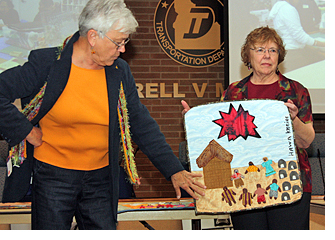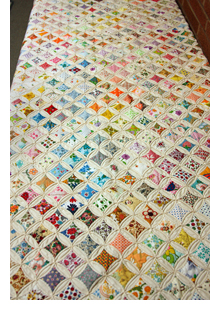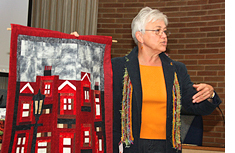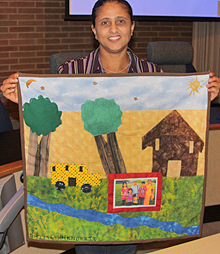
Quilts demonstrate influence of cultures
Bhima Bhandari and her family lived 18 years in a Nepal refugee camp. When allowed to come to the United States, Bhandari faced challenges many refugees must confront – language barriers and a dramatic change in life situation.
Though many churches, neighborhoods and companies reach out to help the roughly 75,000 refugees admitted into the country each year, it took Artisans4Hope to provide Bhandari her best new start.
 Bhandari is the organization’s first, and only, paid employee as program director. She is joined by a group of dedicated volunteers determined to help transplanted residents to the valley craft new lives with needle, thread and pieces of cloth.
Bhandari is the organization’s first, and only, paid employee as program director. She is joined by a group of dedicated volunteers determined to help transplanted residents to the valley craft new lives with needle, thread and pieces of cloth.
Artisans4Hope is a nonprofit organization that uses needle and thread to help displaced people learn sewing, knitting and English-language skills. The organization was created to “enhance the lives of and empower refugees through training and collaboration.”
“We’re all about knitting and making things,” Sue Schiele told ITD employees during Thursday’s brown-bag lunch program at Headquarters. Schiele is vice president and a volunteer for the Boise-based nonprofit.
Story cloths and quilts are often the only memories of distant homes for many of the refugees. So making these “folk-art” works helps improve skills with needle and thread and provides a means to record earlier lives.
 Refugees have come to this country from many parts of the world, explained Schiele. Vietnamese in the 1970s, Bosnians in the early 90s and now groups from Bhutan, the Congo and Myanmar all sought sanctuary from horrific situations, civil wars, ethnic cleansing or tribal conflicts.
Refugees have come to this country from many parts of the world, explained Schiele. Vietnamese in the 1970s, Bosnians in the early 90s and now groups from Bhutan, the Congo and Myanmar all sought sanctuary from horrific situations, civil wars, ethnic cleansing or tribal conflicts.
Boise is one of 200 resettlement sites located throughout the country. Eleven countries currently accept refugees, with most going to the U.S. and Canada.
The one thing these refugees appreciate most about coming to America is education for their children. “It’s hard for the people who first come here but will be better for their children,” Schiele said.
Story cloths and quilts are typically not for sale but can be viewed at the Boise office. Artisans4Hope products such as scarves and bags may be found for sale at locations throughout the valley or by contacting the organization directly at http://www.artisans4hope.org
Money raised through the sale of items made goes to the refugees, helping them become self-sufficient income earners.
“We’ve done special orders like conference bags and produce bags for different organizations and individuals,” Schiele said. Special wedding bridesmaids bags were once produced as a custom order.
Artisans4Hope is open to more volunteers or donations of old sewing machines for people to be able to work at their homes. There is currently a waiting list of people wanting the sewing machines to work at home.
Volunteer Joan Cloonan said that most people involved with supporting the organization are “retired folks from different backgrounds.”
“We really just have a good time,” she said. “This is one of the most satisfying volunteer things I’ve ever done.”
”We feel our lives have been enriched by getting to know the refugees,” added Schiele.


Photos: Sue Schiele and Joan Cloonan show a story cloth by Hawa Kheire depicting violence that beset her village (top); A cathedral window-style quilt is an example of a beautiful but labor-intensive effort on loan for the presentation (top right); Schiele talked about her London story cloth (above left); and Bhima Bhandari showed a story cloth depicting her family (above right).
Published 9-28-2012